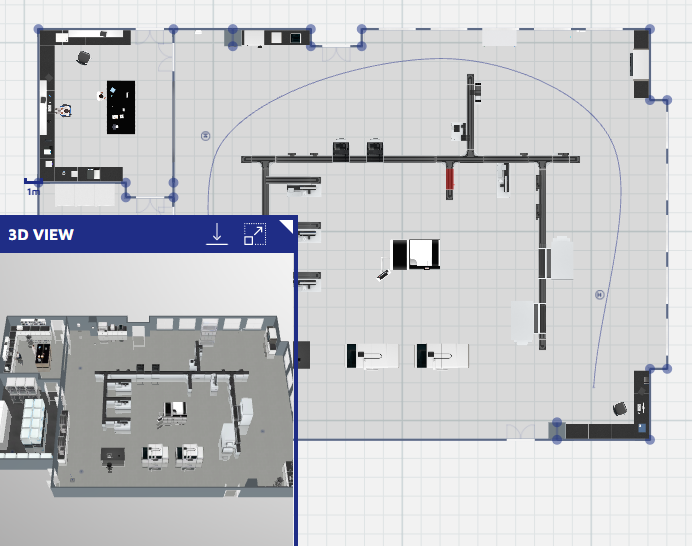Unlocking the potential: Exploring the benefits and challenges of efficient laboratory design

Laboratories are not only the heart of scientific discovery and innovation, serving as the breeding grounds for groundbreaking research and advancements across various fields. Laboratories are also an essential part of the daily systems infrastructure that keeps modern society functioning through high volume testing of consumer products, medicine, and food. A well-designed laboratory can significantly impact the accuracy, speed and efficiency of analytical outcomes, productivity, and safety. Efficient laboratory design is essential to maximize these benefits, but it also comes with its own set of challenges. In this article, we’ll delve into the benefits and challenges designing an efficient laboratory.
Efficient laboratory design offers numerous advantages, but it’s crucial to strike a balance between efficiency and flexibility. A one-size-fits-all approach may not work for every organization. Therefore, careful consideration of the specific needs, goals and constraints of the laboratory is essential.
Advantages of effective and efficient laboratory design
- Enhanced safety: Safety is paramount in laboratory settings. Effective laboratory design prioritizes safety by minimizing potential hazards, ensuring proper ventilation, and providing adequate space for equipment and personnel. This reduces the risk of accidents and promotes a safer working environment.
- Optimized workflow: An efficiently designed laboratory can streamline workflows, making processes more efficient. Staff can move between workstations and equipment with ease, reducing downtime and enhancing productivity.
- Flexibility: A modular layout with adaptable infrastructure allow labs to accommodate changing needs, evolving technologies and growth without the need for extensive renovations, thus reducing the need for future capital expenditure.
- Resource efficiency: Efficient laboratory design can lead to significant resource savings. Energy-efficient lighting, heating, and cooling systems reduce operational costs and contribute to sustainability goals.
- Improved collaboration and communication: Open and collaborative spaces encourage interaction and knowledge sharing among staff. This can foster creativity, cross-disciplinary collaboration, and the sharing of resources and expertise.
- Improved organization: Well-designed laboratories feature sufficient and organised storage systems, making it easier to manage supplies and inventory.
- Productivity boost: With fewer distractions, staff can focus on their work more effectively. Efficient laboratory design can contribute to increased output and reduced lead times, easier adaptability to customer needs, etc.
Disadvantages of Efficient Laboratory Design
- Initial Cost: Building an efficiently designed laboratory often requires a (marginally) higher initial investment. High-quality materials, modular designs, specialized equipment and furniture, and infrastructure can increase construction costs.
- Noise and distractions: Open and collaborative layouts can sometimes lead to increased noise levels and distractions, which may hinder concentration and focus, particularly for tasks requiring precision and accuracy. This can of course be considered during the design phase.
- Adaptation challenges: Adapting an existing laboratory to meet efficiency standards can be challenging and costly. Retrofitting an older lab to incorporate modern design principles may require significant renovation work.
- Overemphasis on efficiency: Overzealous focus on efficiency may sometimes compromise the aesthetics and comfort of laboratory spaces. A sterile and utilitarian environment may reduce staff comfort and satisfaction.
Helping you find the right balance
Kallion’s approach can be tailored to virtually any laboratory. Our experts can help with any aspect of the laboratory design process from conception to completion. Our holistic and bespoke approach and supported by state of the art digital tools also ensures that processes are effectively positioned with the laboratory design creating ergonomic, comfortable, effective, and efficient laboratory spaces that can be adapted to any future needs. Please reach out for an initial discussion on how Kallion can assist you.

